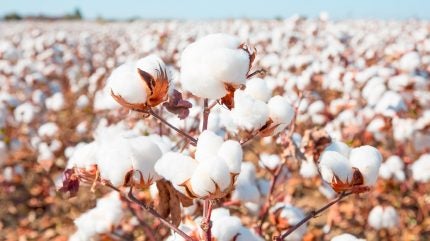
Dr Jody Campiche, NCC vice president of Economics & Policy Analysis, said the survey reflects the challenging economic conditions faced by US cotton growers, who are entering their third consecutive year of unfavourable market returns and insufficient agricultural support mechanisms.
In NCC’s economic outlook for 2025, economists have identified several critical elements that will influence the economic landscape for the US cotton sector in 2025.
The global cotton market’s future will be influenced by the trajectory of worldwide economic activity. Although there is an expectation for modest economic expansion over the next two years, these growth rates are anticipated to fall short of the historical average.
The year 2024 presented numerous obstacles for the US cotton industry, including depressed prices, elevated production costs and diminished demand.
As growers approach the 2025 planting season, they are confronted with tough decisions due to current market prices not covering production expenses.
While an uptick in global cotton demand is expected for 2025, potential shifts in trade policies contribute to considerable uncertainty within the international cotton marketplace.
During the survey period, all commodity prices witnessed a downturn compared to average futures prices in early 2024, with cotton experiencing the steepest fall. Consequently, the price ratios of cotton to other crops like corn and soybeans were less favourable than in the prior year.
Estimations for 2025 suggest a harvested area in the Cotton Belt of 7.8m acres and an abandonment rate of 18.4%. Applying a five-year average yield per state results in a predicted harvest of 13.9m bales, which includes 13.5m upland bales and 392,000 extra-long staple (ELS) bales.
Looking at domestic consumption, US mills are expected to use 1.73m bales in the 2025/26 marketing year, slightly up from 1.70m bales in the preceding period.
The US textile sector continues to struggle against weakened Western Hemisphere trade flows and heightened competition from imported textiles under de minimis provisions.
On an international scale, world cotton consumption is forecasted to rise by 1.7% to 117.9m bales for the 2025/26 marketing year. This anticipated increase in global demand, coupled with an expanded US supply, points to a more robust US export forecast compared to the previous year. Nevertheless, US ending stocks are projected to climb to 5.2m bales.
Dr Campiche further elaborated that global production is expected to dip to 117.2m bales for 2025/26 due to a marginal decrease in harvested acreage and yields.
As consumption grows in major importing nations, world trade is set to rise to 44.2m bales. The convergence of higher global consumption and trade with reduced production will likely lead to a contraction in ending stocks to 77.7m bales.
While projections indicate a marginal increase in the US share of world exports for the coming marketing year, Brazil is poised to maintain its position as the top exporter for a third consecutive year.
The US cotton sector remains heavily export-driven, dealing not only in raw fibre but also in cotton yarns and fabrics; thus, any tariff changes could dramatically reshape trade dynamics.



